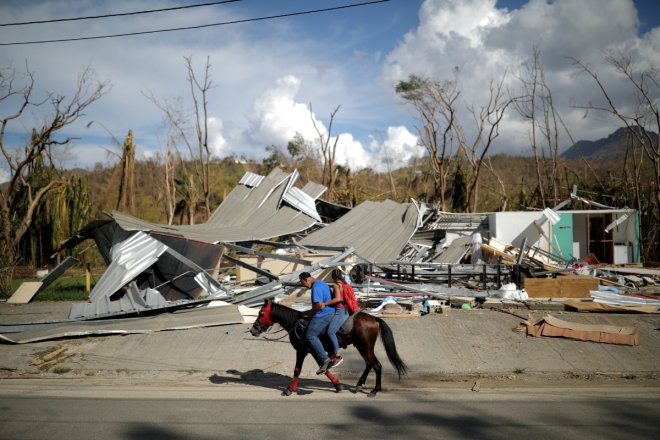Considered to be an intense Atlantic tropical cyclone, Hurricane Maria hit places which include Puerto Rico, Dominica, the Dominican Republic, Guadeloupe, Martinique and United States Virgin Islands causing deaths and extensive damage in these areas in September 2017. Classified as a category 5 hurricane, the storm has had a maximum wind speed of 175 miles per hour.
The overall losses incurred as a result of the damage is estimated between $15.9 and $95 billion out of which Puerto Rico was most affected.

Out of 79 deaths caused by the storm, 34 lives were claimed from Puerto Rico alone. The island's power grid was destroyed by the storm leaving its inhabitants suffering without electricity. Even after a fortnight since the hurricane hit, 89 percent of the island was still in want of electricity, 44 percent did not have water service and 58 percent of the land still did not have cell network service. Thousands of people were ordered to evacuate before the storm hit the region as their lives were considered to be at risk and as many as 2000 people had sought shelter prior to the storm. Puerto Rico was declared a Federal Disaster Zone after the hurricane.
Puerto Rican governor Ricardo Rosselló had stated that it would take months before some places had power supply restored. More than 2000 people were rescued by the military rescue team a day after the storm.
Even as citizens of Puerto Rico were still recuperating from the aftermath of Hurricane Irma which had hit the country just two weeks ago, Hurricane Maria's back to back destruction is now affecting their recovery to a very large extent.
IBTimes Singapore has compiled a series of images portraying the aftermath of Hurricane Maria on Puerto Rico.






















